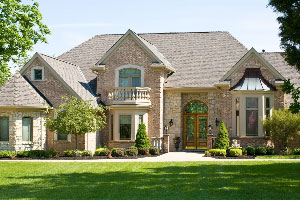
The hot, wet coastal climate of Corpus Christi causes you to seek respite in your cool, dry house on summer days. However, the humidity and heat aren’t only affecting you—they are affecting your house. Your roof bears a significant heat load during the summer months. Years of exposure to a warm, wet climate can have damaging consequences.
Here’s what you need to know about how the humid weather can affect your roof and what you can do about it.
THE EFFECTS OF HEAT AND HUMIDITY
Unfortunately, the combination of heat and humidity can often significantly decrease the longevity of your shingles. Also, continual exposure to heat from the sun increases your roof’s temperature. Your air conditioner will have to work very hard to cool a home with a hotter roof—a job that is already more difficult when the air is moist.
Humid climates can also lead to moisture problems in the attic. This is especially common in older homes. Many “cookie cutter” or kit homes used house plans that aren’t designed specifically for a humid climate. More recently constructed homes are usually built with the climate in mind, making indoor moisture problems from a poorly designed roof less common.
Finally, moist air can promote mold and moss growth on certain shingle types. The presence of constant moisture and warmth creates a prime growing environment.
WHAT HOMEOWNERS CAN DO
Fortunately, you don’t have to experience any of the problems listed above with some careful planning and maintenance.
PROPER VENTING
You can minimize the effects of heat and humidity on your home’s roof with proper venting. Venting should be installed beneath the roofing layer to help dissipate heat and prevent condensation from forming on the interior of a much cooler home.
Without venting, mold can begin to grow on interior surfaces. You might even start to see signs of water damage as interior condensation begins to drip from the inside of the roof to the top of your ceiling.
Water damage is also common around windows because the exterior walls extend up into the attic space and can collect more moisture. The water slowly leeches down, making pathways around windows. Bubbling drywall and swelling window frames are both signs that you have a serious moisture problem.
Finally, make sure all appliances like your dryer and your bathrooms are properly vented to the outside instead of to your attic.
SHADE
Shade is natural way to reduce the external heat of your roof. Reducing the temperature of your roof can decrease the amount of interior condensation because the difference in temperature will not be as great. Also, shade over your roof surface will decrease the strain on your AC unit.
Planting a shade tree close to your home can be a great, natural investment for your roof.
COOL ROOFING MATERIALS
The most popular roofing material in America is the asphalt shingle. Unfortunately, asphalt is not the best shingle choice for hot and humid climates. If you need to replace your roof, it’s best to choose something with a little more heat resistance that naturally lends itself toward venting. For this reason, clay shingles with their domed design are popular in warm climates.
You can also try using metal or rubber shingles, but always choose a shingle with a light-colored finish. Light-colored roofing materials will reflect more light, meaning they also help to reduce your roof’s temperature.
TIMELY REPAIRS
Postponing a roof repair is never a good idea, but staying on top of repairs when you live in a hot, humid area is especially important. Since many homes have wooden interior structures, anytime the wood is exposed to humidity, the wood may swell and structurally weaken your roof foundation.
You can also try using metal or rubber shingles, but always choose a shingle with a light-colored finish. Light-colored roofing materials will reflect more light, meaning they also help to reduce your roof’s temperature.
DEHUMIDIFIERS
Decrease attic humidity by running a dehumidifier, even if no one uses the attic for living or storage space. You want to prevent mold growth from condensation and increased heat capacity in moist air, so a dehumidifier is a must for all homeowners.
Contact us at Vertex Roofing to install the venting or cool roof material you need to protect your house from humidity damage.
